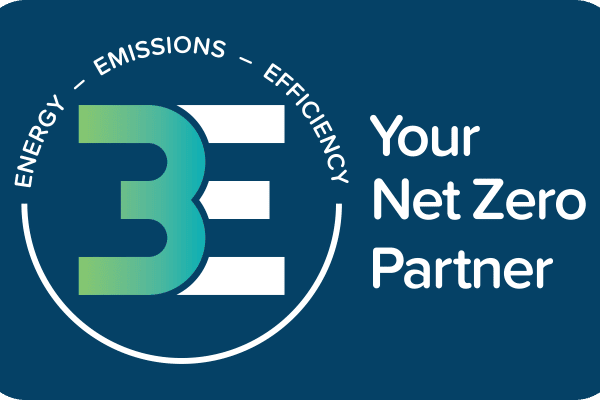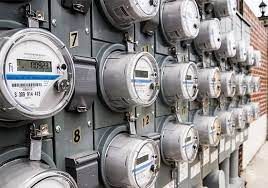How to maximise energy savings with energy conservation measures / ECMs:
As energy prices continue spiralling upwards, big businesses and organisations are taking a serious look at cost-cutting to counter the impact of doubling in utility bills on operational budgets. An effective way to achieve cost savings is by investing in Energy Conservation Measures (ECMs). More specifically, ECMs are designed, installed and commissioned as part of a turn-key energy efficiency project or guaranteed energy savings project.
Before we discuss the benefits and opportunities with energy efficiency projects, and how to maximise the return on investment, let’s first define what is meant by Energy Conservation Measures (ECMs).
What does Energy Conservation Measure mean?
An Energy Conservation Measure or ECM for short, is a single initiative undertaken to reduce the energy consumption of a particular piece of equipment or a certain aspect of essential building services; energy conservation measures or ECMs are pluralistic and therefore imply a combination of several ECM initiatives to reduce energy consumption across an entire facility or building.
Energy is a term that broadly refers to either electricity, gas or water consumption; energy conservation and energy efficiency are often interchangeable terms as improved energy efficiency also means reduced energy consumption.
So when we talk about ECMs, think about energy efficiency. And when you think about energy efficiency, think in terms of energy efficiency projects.
As mentioned before, ECMs are specific actions taken to improve the energy efficiency of particular energy-consuming assets (ECAs) and/or measures that improve a building’s overall efficiency and environmental rating.
Energy conservation measures may involve a variety of works done to fixtures, fittings and central plant and equipment, including:
- Replacements and upgrades
- Refurbishments
- Systems optimisation and re-commissioning works.
ECMs typically requires electrical and mechanical engineering expertise to design and install energy-saving solutions to achieve desired energy efficiency outcomes i.e. cost savings.
There are specialist companies in each ECM area, but when implementing larger energy efficiency projects with multiple ECMs it can become a complex undertaking to manage multiple contractors and sub-contractors.
Examples of Energy Conservation Measures / ECMs
ECMs are typically driven by advancements in technology whereby equipment and energy-consuming devices become more and more energy-efficient and cheaper over time. A clear example of this is the proliferation of LED technology (Light emitting diodes). LED technology requires less power for the same equivalent light output as traditional fluorescent and compact fluorescent lights (CFL).
Here are some other examples of Energy Conservation Measures ( ECMs ).
- Lighting controls including timers and occupancy sensors
- Variable Speed Drives (VSD)
- Upgrades to Heating Ventilation Air-Conditioning and Cooling (HVAC) – Dampers, actuators and controls
- Solar PV systems and battery storage
- Co-generation and Tri-generation
- Boiler upgrades / optmisation
- Chiller replacements / optimisation
- Voltage Regulation Units (VRUs)
- Demand response management
- Building Management Systems / BMS optimisation
- Building Automation
- Building analytics software with programmable rules and alerts
- Building sealing
- Water pumping and treatment
Advantages of Energy Conservation Measures / ECMs
Aside from the obvious benefit of reduced energy consumption, ECMs can also provide the following benefits:
- Reduces expenditure on utility bills.
- Reduces maintenance costs
- Reduces CO2 emissions
- Improves occupancy comfort
- Increases asset value
Benefits of energy savings projects
How to maximise return on investment in energy conservation measures
Energy conservation measures / ECMs should always be treated as an investment and as such should be funded and project managed accordingly, in the same way as investing in stocks, property or acquiring a business. All investments have inherent risks and rewards. Generally speaking, when there is a high degree of risk involved, there’s an expectation for a higher rate of return (reward) and vice-a-versa.
Energy conservation measures / ECMs – or energy efficiency projects – can be seen as an investment because they produce measurable financial savings as a consequence of the improved efficiency, lower operational and reduced maintenance costs – the by-products of implementing ECMs.
Typically, there are two criterion used to justify a business decision to invest in an energy efficiency project namely: payback period and return on investment ratio.
The Payback period refers to the duration of time whereby the principal cost of the project is covered – or ‘paid back’ by the savings generated during that course of time. So if a project costs $1.0 million and the annual savings is calculated to be $180,000 p.a. – then the simple payback period would be approximately 5.6 years ($1,000,000 / $180,000)
Return on investment (ROI) refers to the percentage return on the principal invested from the total financial savings derived from the project. In the above example, the return on investment would be calculated as 18.0% ($180,000 / $1,000,000).
When it comes to implementing an ECMs project, the key is to reduce the financial risks and technical risks involved while maximising the energy savings.
Here are three tips to minimise risk and maximise savings in ECMs / energy efficiency projects.
1) Engage a single-point-of-contact energy efficiency specialist or Energy Services Company (ESCO) to provide an end-to-end solution:
a) Consultations and discovery workshops
b) Site assessment(s) / energy audits
c) Identification of ECM opportunities
d) Financial modelling on ECM opportunities, including costs, savings, return on investment and payback period projections.
e) Summary of above and key recommendations in a detailed energy advisory report.
f) Implementation proposal for a turn-key solution
g) Measurement and verification plan
h) Actual savings report
2) Consider opportunities for future capital cost avoidance
Be open to a holistic approach to ECMs including upgrades to ‘big ticket items as part of a multi-ECM project. An energy efficiency project that blends ECMs with shorter paybacks and ECMs with longer paybacks could be a more financially viable investment as compared to investing in each ECM separately. A holistic approach may afford an opportunity to upgrade ageing equipment and/or end-of-life equipment which would otherwise need to be replaced – doing it as part of an energy conservation project where energy efficiency is the focal point ensures the new equipment is commissioned for optimal performance which leads to reduced operating and maintenance costs.

- De-risk the investment by insisting on fixed-price delivery, performance-based metrics and guarantees.
a) Work with an ESCO that can provide you with a fixed price proposal to deliver on all aspects of the energy efficiency project including project design, installation of ECMs, commissioning, measurement and verification and ongoing monitoring.
b) Make sure the ESCO you work with is prepared to offer a savings guarantee, so if the project underperforms then there is no negative financial impact which ensures the return on investment is protected.
- How energy conservation projects can increase shareholder value and attract investors
- 7 reasons why energy conservation is a smart business strategy
- Energy savings strategy to solve high energy costs in big business
- How to reduce high energy costs as energy prices escalate
- Soaring energy costs forces closure on yet another SA business.
- What is an ESCO and how can they help your organisation save money
- Why an Energy Audit is not always the best approach to Energy Efficiency
- Energy Savings Project: How organisations Save Big $$$ on Energy Bills
- Energy Efficiency Opportunity Assessment(s)
Read other articles in our latest news and insights.
About Ecosave
Ecosave is a Tier-1 Energy Services Company (ESCO) specialising in holistic, performance-based energy efficiency projects since 2002. Ecosave has been a trusted energy savings partner to a number of public sector and private sector organisations for over 15 years…more





